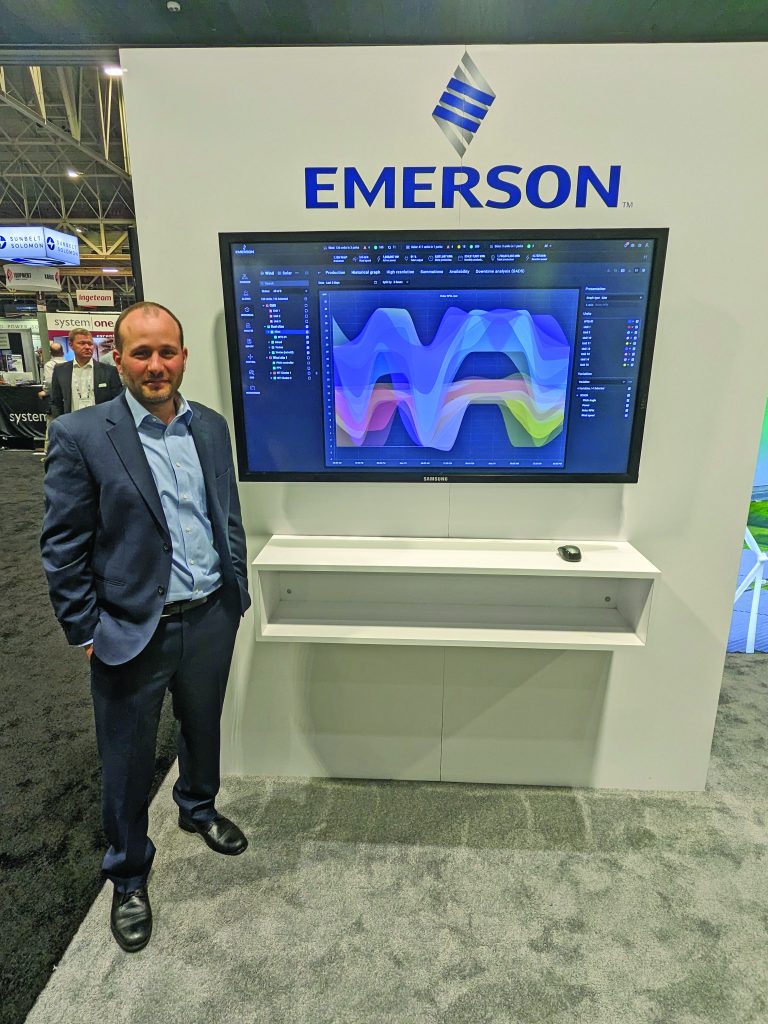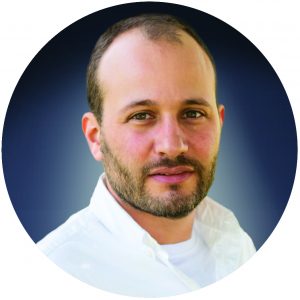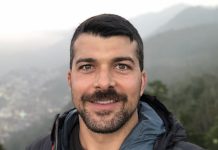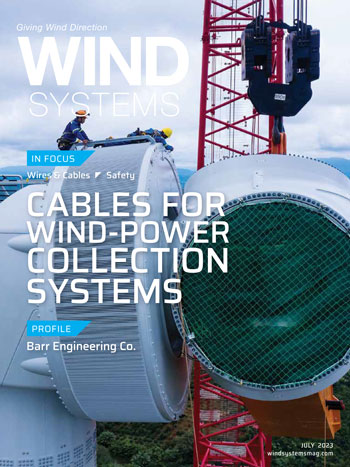What does Emerson do for wind and other renewables?
Emerson has a long and proud history of serving the traditional power sector for over a century, and we’ve been supporting a lot of the major utilities in that space. As more and more power producers have been moving into the renewable space, we’ve been moving with them. We cover renewables in nearly every space—hydropower, solar and battery storage, hydrogen and wind power.
Emerson acquired Mita-Teknik in December 2021. They’ve been a great addition to helping us bring solutions to our existing customers in the space of wind turbine controls and asset management, and even some specific equipment controls like pitch retrofits and condition monitoring. Our focus is providing access to data that either we generate or pull out of existing equipment.
What is a turbine retrofit and how is Emerson involved in making this happen?
There’s a lot of equipment within the turbine, and we are focused in two main areas. I’ll start with the most general one first, the controls retrofit. The turbine controller is the piece of equipment that is the brains behind the turbine. It’s controlling when they’re starting, when they’re stopping, what the load is, which direction they’re pointing, how they’re into the wind-blade pitch, and how fast they’re running.
We provide both OEM solutions and retrofit solutions that are independent from the equipment OEMs. What we often hear from our customers is either due to reliability, or a lack of access to data, they want to own the operational data generated by their assets. They want to go in and be able to control the assets they own. Consider the traditional power industry—they are used to owning their assets’ data. They’re used to having full control, full access to data, and they expect that same control in the renewables space. That’s what we can provide to them. By bringing in an open-control platform, they have access to all the information they need. They can change and modify any of the control algorithms. It’s completely open and available for them.
To enable this control, we have specific control retrofits for specific wind-turbine models. There are over 350 specific wind-turbine models that we have off-the-shelf retrofits for, designed to be plug and play. You disconnect the wires; you pull out the controller; you put in the new controller; you re-land the pigtails. We can generally do a full-term retrofit in one to two days.

What is Ovation Green and what does it mean for wind?
As I mentioned before, we have this tremendous history in the traditional power space, and the Ovation Green portfolio is the expansion of that with renewables-focused solutions. It allows us to meet two critical needs at the same time: we have both a purpose-built renewables solution and all the benefits of integrating it into the larger ecosystem. We’re hearing customers say things like, “I want standardization; I want my engineers and operators going from my coal plant to my gas plant to my hydro plant to my wind turbine to my solar sites.” These customers benefit when their personnel are all familiar with the same platform and with broader innovation. We can do that. Within Ovation Green specifically, we have solutions that we’re bringing in and ones we’re further developing that are built for renewable projects, not originally built for fossil projects.
Since you acquired Mita-Teknik last year, how has that helped you advance where you need to go?
We’ve been involved in the renewables space for quite some time. Some of our earliest projects were with solar in the U.S. and globally for the past 10 years or more. We had wind projects before the acquisition of Mita-Teknik, but our customers were asking us to expand our solutions. They wanted our deep power generation expertise and the cutting-edge wind technologies in a format that would help them optimize their renewables operations. And Mita-Teknik brought that solution. They were a leader in wind-turbine controls. They developed some of the first controls in the ’80s, and they’ve been a large supplier to OEMs in the European market and in the Asian markets, but not as much in the U.S. We’re able to bring that expertise to our customers here. We’re seeing a tremendous connection between the pains and the challenges they’re having and our solutions.
Are you developing any new software for wind clients?
Yes. Most of our development has been around energy management and asset management. On the energy-management side, you’re seeing a lot of the grid and connection requirements changing. You’re seeing a little bit on the battery integration and hybrid sector, and even more on the solar side. Our customers want more integrated controls between asset types. Energy management at the park level or at the fleet level is an area of focus for us.
Similarly, asset management brings in a single-purpose-built SCADA and asset-management platform that allows seamless integration between wind sites, solar sites, battery sites, and other asset types. We can also layer additional industrial software solutions on top of that. For example, we’ve partnered with AspenTech, who we now have 55 percent ownership of, and they have a lot of digital twin simulation technology, AI, and machine learning technology, which integrates with our existing machine-learning advancements from our Ovation platform. We are applying that knowhow to the specific needs of wind.
Emerson’s wind involvement is still relatively new, correct?
It depends how you look at it. Mita-Teknik was formed in the ’60s, and they’ve been delivering turbine controls since 1969. The integration of our renewable energy technologies team is going tremendously well, and the Denmark team is an integral part of our development cycles now with the solutions and support we’re offering to customers.
Prior to the acquisition, Emerson and Mita-Teknik were working with a lot of the same customers. So, while Emerson’s involvement in wind may be a little newer, the relationships to the customers and the challenges are not.
What’s been the market response to what you are offering the wind industry?
It’s been very, very positive. We’re doing this for a handful of reasons. One is that it’s just being asked for. Our customers are saying, “We have these pains; can you help us? We’ve acquired these wind sites. I want you to do for us here what you’ve done for us there.”
Our customers are striving for ownership and access to their assets. They want to be able to see all of the data that’s being generated. They want to know the condition of the equipment that they have. A lot of times, new turbines are going in with service agreements where they don’t have access to what’s going on. I heard a story from a customer recently where they have condition monitoring equipment on the units, but they don’t know the data; they don’t even know what the alarm thresholds are. They just know whether there’s a problem or not. And when the equipment gets turned over to them in 10 years, they won’t know the history of it.
Being able to provide open access to data — either through our equipment or through our compatible protocols that we’ve developed that allow us to go in and access data directly from the OEM’s controllers and bring it into our SCADA solutions — has been the biggest challenge.
Our Ovation Green SCADA solution to that challenge is really exciting. There are a few layers to it: the data collection, the data aggregation, and then the user interface and the intelligence behind it. All of those are addressing specific challenges we’re hearing from our customers. In many cases, there’s a controller there, and it’s putting 20 data points out to a server and the user can access the server, but they know there’s a wealth of knowledge beyond those 20 points that’s cut off.
We can access that wealth of knowledge. We can take a controller and go from 20 data points to 2,000, and we can do that across all different asset types, either different turbine types, or even assets outside of wind. And then we start aggregating that — generalizing the data, aggregating it and making it manageable and making it make sense, and then feed that up into a very quickly scalable piece of software that’s built for purpose. It is a solution that’s built specifically and only for renewable asset management.
More info www.Emerson.com/Ovation-green































